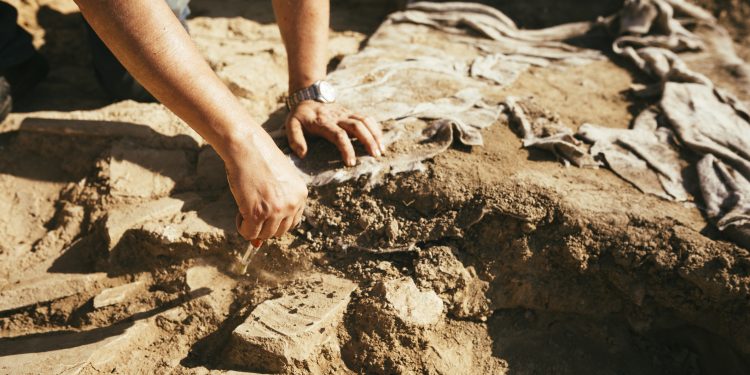Ancient sandals and baskets were discovered in a Spanish cave that challenge the current historical timeline for these items.
According to the New York Post, some 20 pairs of prehistoric sandals were discovered at the Cueva de los Murciélagos in Albuñol near Granada.
The sandals measure just over eight inches and are dated back to at least 6,200 years ago.
In addition, the Post reported reed and grass baskets were discovered at the site.
These have been dated back to the Holocene period. This means that baskets were made between 6,200 and 9,500 years ago.
The study about the finds from the Universidad de Alcalá (UAH) and the Universitat Autònoma de Barcelona (UAB) was published in the journal “Science Advances.”
According to SWNS, the British news service, Francisco Martínez Sevilla, a researcher at the Prehistory Department of UAH, stated, “These are the earliest and widest-ranging assemblage of prehistoric footwear, both in the Iberian Peninsula and in Europe, unparalleled at other latitudes,” via the New York Post.
“The new dating of the esparto baskets from the Cueva de los Murciélagos (Cave of the Bats) of Albuñol opens a window of opportunity to understanding the last hunter-gatherer societies of the early Holocene,” he said.
Sevilla added, “The quality and technological complexity of the basketry makes us question the simplistic assumptions we have about human communities prior to the arrival of agriculture in Southern Europe.”
“The Cueva de los Murciélagos as a unique site in Europe to study the organic materials of prehistoric populations,” he said.
The Cave of the Bats is south of the Sierra Nevada and has low humidity levels which has been attributed to preserving these artifacts, per the Post.
María Herrero Otal, co-author of the study, noted to SWNS, “The esparto grass objects from Cueva de los Murciélagos are the oldest and best-preserved set of plant fibre materials in Southern Europe so far known,” per the Post.
“The technological diversity and the treatment of the raw material documented demonstrates the ability of prehistoric communities to master this type of craftsmanship, at least since 9,500 years ago, in the Mesolithic period,” she added.
“Only one type of technique related to hunter-gatherers has been identified, while the typological, technological and treatment range of esparto grass was extended during the Neolithic from 7,200 to 6,200 years before the present,” she said.
The Fort Rock Sandals, as they are referred to be researchers, were found under a layer of volcanic ash that came from the Mount Mazama eruption 7,700 years ago, the Post reported.


























 Continue with Google
Continue with Google